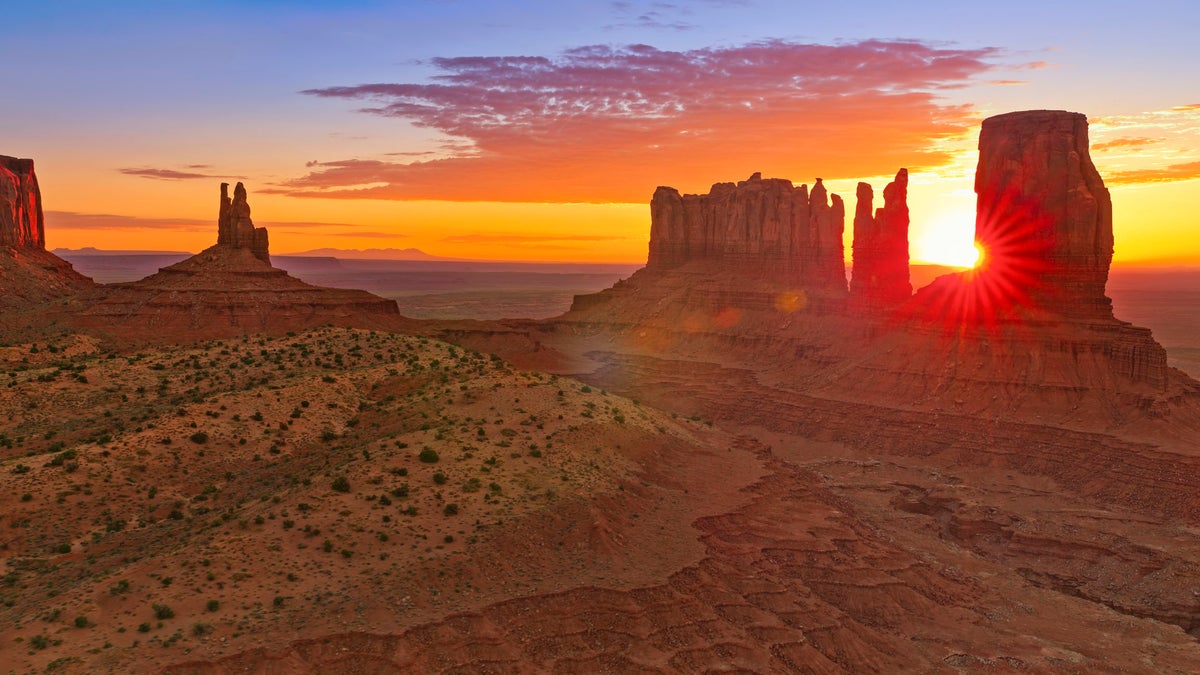No products in the cart.
Outdoor Adventure
What You Missed: How Increased Outdoor Rec on Tribal Lands Creates Problems
For exclusive access to all of our fitness, gear, adventure, and travel stories, plus discounts on trips, events, and gear,
sign up for Outside+ today.
Welcome to What You Missed, our daily digest of breaking news and topical perspectives from across the outdoor world. You can also get this news delivered to your email inbox six days a week by signing up for the What You Missed newsletter.
Put this feature story by Elizabeth Miller in the Colorado Sun at the top of your reading list.
The piece tells the history of the Navajo Rangers, a group that protects the indigenous nation’s cultural and historical places, and it includes multiple hair-raising stories of crimes on tribal lands that the group has investigated over the years.
The story includes important reporting on the impacts of hikers, climbers, and other outdoor enthusiasts on tribal lands. Across the country, rural towns and communities see a bump in tax revenue when hikers or cyclists flock to local trails or recreation areas; that’s not always the case on tribal lands, however, where communities generate revenue directly from tribe-owned businesses, like tour companies or gaming.
Tribes also do not receive as much federal funding as state parks, national monuments, or other public lands do for protecting some outdoor and cultural sites.
And then there’s the constant threat to sacred sites from visitors, many of whom are oblivious to the cultural importance of specific cliffs, rivers, or other features. The uptick in visits to national parks amid the pandemic is mirrored by a surge in visits to tribal lands, even though some areas have been closed to outsiders.
For example, climbers frequently ask for access to Tsé Bita’í—a volcanic formation in New Mexico often called Shiprock—even though the Navajo have made it off-limits due to its historic and cultural importance. Other visitors simply sidestep regulations and tribal law enforcement, and hike illegally on protected lands, often leaving behind graffiti and trash.
Some tribes find ways to balance the push of recreation with the need to protect sites. The Ute Mountain Ute Tribal Park allows guests to explore infrequently visited canyons in southwestern Colorado, so long as they are accompanied by a Ute guide. There are fears that opening these sites up to recreation puts them in danger of one day being taken by the federal government to become national monuments or other federal protected lands.
At some protected sites, such as Bears Ears National Monument and Monument Valley Navajo Tribal Park, tribes have a shared management role with federal land managers. Ernest House Jr., former executive director of the Colorado Commission on Indian Affairs, believes this model to be the best way forward.
Inside the Renaming Process of a California State Park
A story by Ashley Harrell of SFGate provides a window into the lengthy and complicated process of renaming public state parks in California.
In September the California State Parks and Recreation Commission voted to rename a small protected patch of craggy coastline north of Eureka, changing it from from Patrick’s Point to Sue-meg State Park. The former name came from an Irish immigrant who was accused of murdering Native Americans, while the new one reflects the original place name used by the native Yurok people.
The name change is the first one to be completed under California’s Reexamining Our Past Initiative a statewide push to reconsider contested names on state lands.
Members of the Yurok tribe have asked for the name change since the early 2000s. So why did it take so long?
The process, it turns out, has been slowed by staffing shortages and small budgets. When a name request is submitted, state employees first research the origins of the original name. Then, a park’s executive staff discusses the renaming proposed with various stakeholders and financial backers. If the parties agree, then the department pulls in historians and the public to then choose an appropriate new name—this step can take years to complete. The state’s park agency then presents the new name to the executive staff for evaluation, and if the name is approved, it finally goes to the California State Park and Recreation Commission for a final vote.
According to the story, the cost of establishing the name Sue-meg State Park was in the tens of thousands of dollars. The cost to then change signs and brochures was around $3,900.
This process is likely to be played out across the country in the coming months and years. In California alone, state agencies are reevaluating 280 park names, as well as the names of thousands of hills, buttes, overlooks, and other features. And earlier this month interior secretary Deb Haaland created a federal panel to review and remove offensive place names from use on federal land.
Tree Trimming
Swiss trees pic.twitter.com/3ir2G42pzJ
— Candide Thovex (@CandideThovex) November 29, 2021
Freeskier Candide Thovex prunes the hedges with his ski tips in his latest jaw-dropping film.
Member Exclusive
“A New Theory on Sudden Cardiac Deaths in Young Athletes” New research suggests the genes that lead to fatal heart attacks may be the same ones giving athletes a performance advantage. Outside
Around the Outside Network
“Aging Climbers: Keep Your Joints Young for Sending Longevity!” Osteopath Dr. Julian Saunders offers tips on how to prevent ligament and cartilage degeneration. Climbing
“The 13 Best Gifts for Beginner Hikers of 2021” Give your loved ones a leg up with these novice-friendly products. Backpacker
“One-Hour Workout: Lucy Charles-Barclay’s Pedal Power Trainer Session” This bike workout from the Kona runner-up will improve your cadence. Triathlete
“It’s Normal To Feel Sore in the Morning” Aches and pains when you wake up are part of being an athlete and not cause for alarm. Trail Runner

